From lush Garry oak meadows to the fascinating world of intertidal species and ocean marine mammals, Trinity Western University students spent five immersive weeks exploring B.C.’s coastal ecosystems as part of an annual biology travel study that has been running for over 20 years.
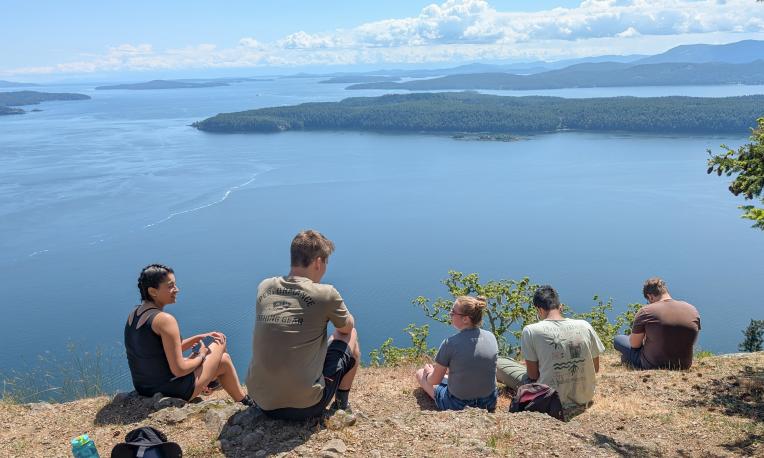
"In those moments—surrounded by the richness of creation—we were reminded of the responsibility we carry as stewards of the ocean and all life within it."
Adventures in ecology and marine biology
Led by professors Dr. David Clements and Dr. Elizabeth Zwamborn, and coordinated by instructor Anna Ogden, the Salish Coast travel study combined coursework in plant ecology and marine biology with experiential learning across Galiano Island, Vancouver Island, Alder Island, Salt Spring Island, and TWU’s Crow's Nest Ecological Research Area.
Dr. Zwamborn, whose research focuses on long-finned pilot whales, enjoyed introducing students to the wonder of marine ecosystems and the importance of environmental responsibility. “It was a joy to share my passion for the ocean and especially for marine mammals with the students, many of whom experienced their first encounters with orcas, humpbacks, sea lions, and sea otters in the wild," Dr. Zwamborn remarked.
"Observing these species in their natural habitats sparked both scientific curiosity and a deep sense of wonder," she said, adding, "In those moments—surrounded by the richness of creation—we were reminded of the responsibility we carry as stewards of the ocean and all life within it.”
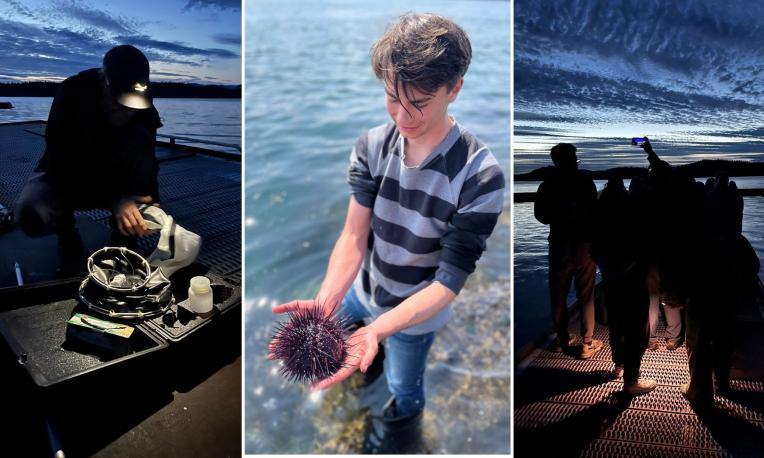
Natural wonders of biodiversity
This year’s cohort began the travel study in early May with a preparatory week on campus. Following this, the class travelled to a waterfront property on Galiano Island, which became their “home base” for the duration of the course. Over the course of the next several weeks, students explored the region’s plant and marine biodiversity while engaging with local environmental organizations and conservation experts.
“Being there in that moment made me feel deeply connected to nature and reminded me how beautiful God's creations truly are.”
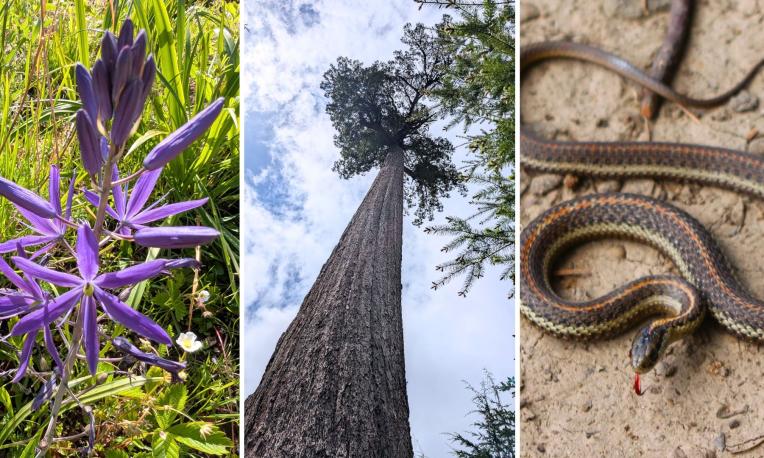
'Like magic'
Jihyun Jiney Lee is a biology honors major specializing in ecology. Lee chose to join the Salish Coast travel study for the enjoyment of learning through hands-on field experiences.
“One of my most unforgettable highlights was seeing the bioluminescence on Alder Island,” Lee shared.
“It felt like magic."
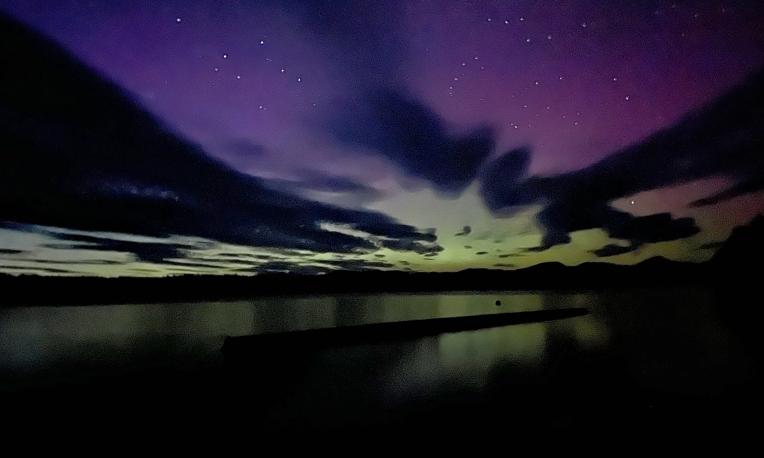
Night skies and bioluminescence
“On a clear night, the sky was filled with countless stars and even the northern lights were above us. And beneath us, the water sparkled with tiny glowing lights, like a mirror of the sky,” Lee described. “The next evening, when rain stirred the ocean, the dinoflagellates lit up in bright patches, turning the whole sea into glowing light patches,” she said.
“Being there in that moment made me feel deeply connected to nature and reminded me how beautiful God's creations truly are.”
Fellow student Kira Burch shared a similar experience of wonderment: "There was something so special about being so close to God's creation and getting to share a passion for nature with other students. I will never forget one night out on the dock at Alder, where we were all so overjoyed to see the most beautiful stars, bioluminescence in the water, and the northern lights."
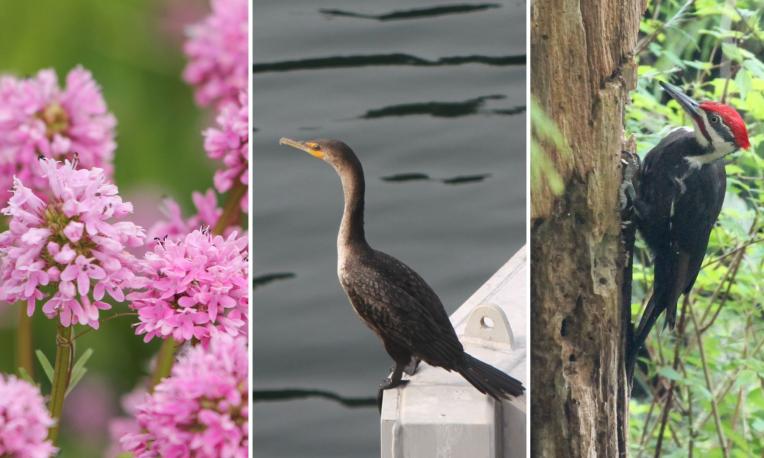
"There was something so special about being so close to God's creation and getting to share a passion for nature with other students."
Engaging in restoration and stewardship
While staying at Galiano Island, the class helped to preserve local plant species. Working with the Galiano Conservancy Association, students took part in ongoing restoration work by removing invasive species and assisting in the food forest and native plant nursery.
Instructor Anna Ogden found satisfaction in volunteering with local restoration efforts, and remarked, “It was great to see the difference we made in removing so many weeds with our many hands!”
The Conservancy staff were grateful for the extra help at a vital time for weeding, and they, in turn, taught TWU students about local plant life and conservation work through an Ecotour.
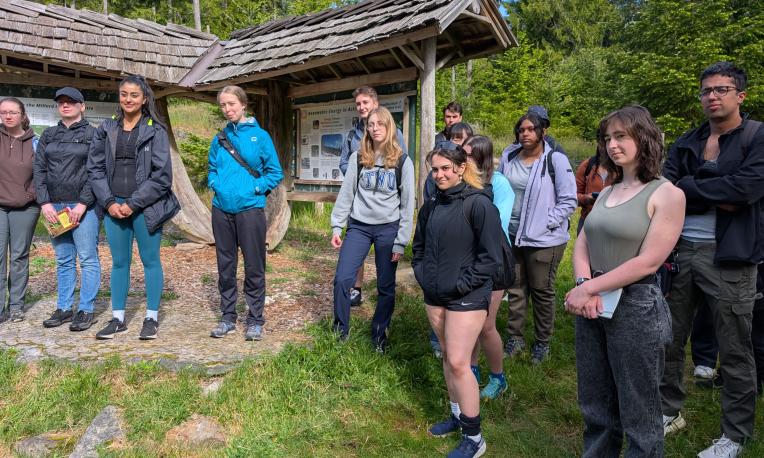
Studying endangered ecosystems
Venturing on to Port Renfrew on Vancouver Island, students visited “Big Lonely Doug,” Canada’s second-tallest Douglas fir tree now left standing in the middle of a clearcut. On their journey to see Big Lonely Doug, the class visited a Garry oak ecosystem at Mill Lake Park. Garry oak ecosystems are among the rarest ecosystems in the province.
Student Zwelinzima Msipa remarked of the experience, "Everyone in the world deserves friends, even Big Lonely Doug. Luckily for him, he had the TWU students for company. He welcomed us with a wide sturdy base, deep entrenched roots, and high-flying branches—a true inspiration for the incoming second growth."
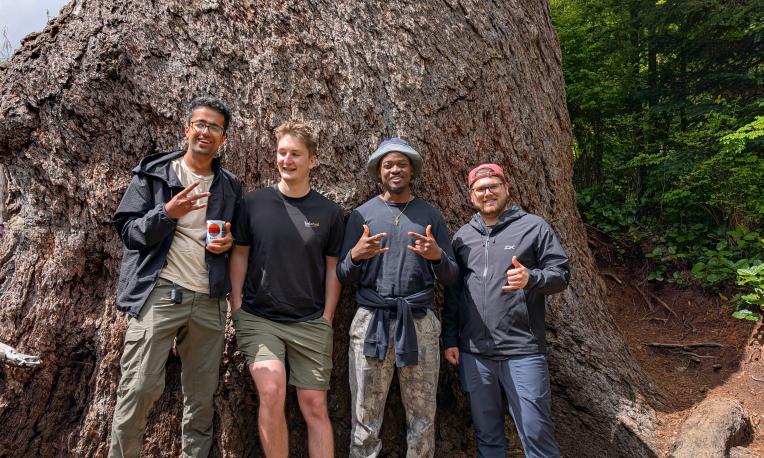
"He welcomed us with a wide sturdy base, deep entrenched roots, and high-flying branches—a true inspiration for the incoming second growth."
Wildlife wonders enrich student projects
There were many more memorable adventures out on B.C.’s open coast, soaking in the beauty and studying the intricate complexities of nature. The class then spent time on TWU’s Crow's Nest Ecological Research Area, which also features prime examples of Garry oak ecosystems. One day was devoted to species observation, where students were each assigned a species of plant to observe. Their research was then consolidated into a major project as part of their coursework.
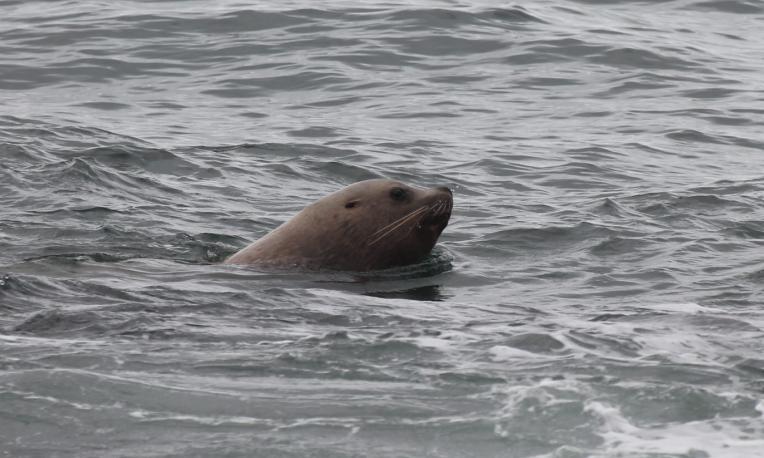
Whale watching and marine life
The second half of the travel study was focused on marine life. Along the beaches of Galiano Island, students began their research and studies at key sites. They then travelled to Alder Island for a week, where they enjoyed kayaking, took boat trips to observe marine mammals, and explored wildlife along the dock.
Ogden recounts how the marine course was “filled with lots of beach exploration, whale sightings, and kayaking.” After sighting whales in front of their property at Galiano Island, the class hopped into their vehicles to get a better view at Active Pass by Georgeson Bay. It was well worth the effort, as Ogden reported:
“We had two failed attempts where the whales did not end up going into the pass, but finally on our third trip we made it and had a beautiful sighting!”
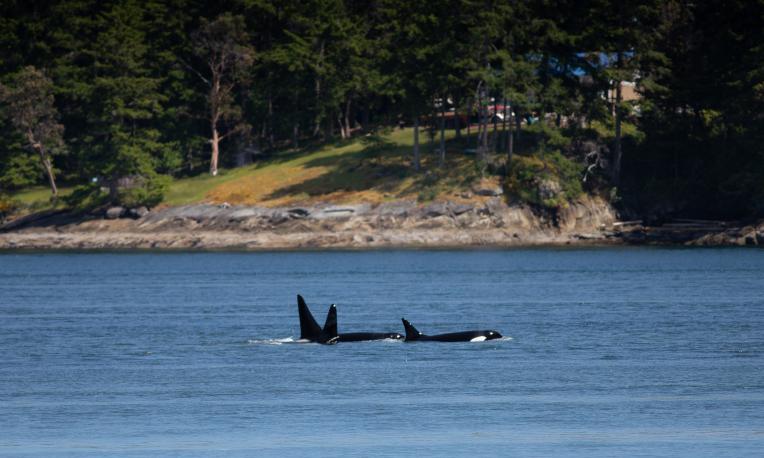
Stories from the field
Travel studies like the Salish Coast program provide experiential learning that is memorable and relational. For Ogden, who has been providing logistical support to the biology travel study for several years, what keeps her excited every year is not only the amazing wildlife sightings but the student interactions, and seeing the growth and development in every learner.
“There is something so special about learning about God’s creation in the field, in a new place that brings the group together,” she said. Ogden highlights a special moment from this year’s course where the team held a campfire in the backyard of their property.
“It was a great time of sharing stories—learning more about each other and where everyone has come from in life and in their journeys of faith,” she recalled.
“It was a moment in time that was very impactful to me and I think to many others.”
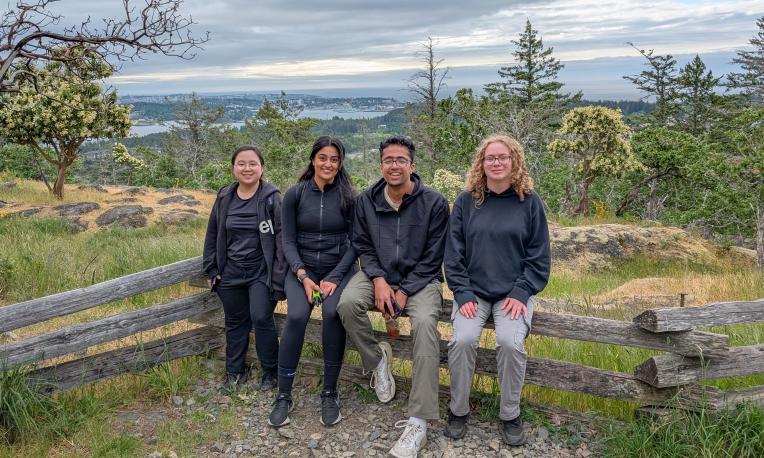
Growth beyond the classroom
Faculty members also valued the sense of community that developed over the course. Dr. Clements, who has taught this travel study for two decades, has a growing list of favourite moments:
“What I really enjoyed about teaching this travel study was the opportunity to explore some new territory on Galiano Island, reconnect with some amazing people on Galiano along the way—like Loren Wilkinson who is a legendary figure in creation care—hanging out with 16 special students, and learning a lot about the unique life story of each of their journeys on the planet…journeys to be continued!”
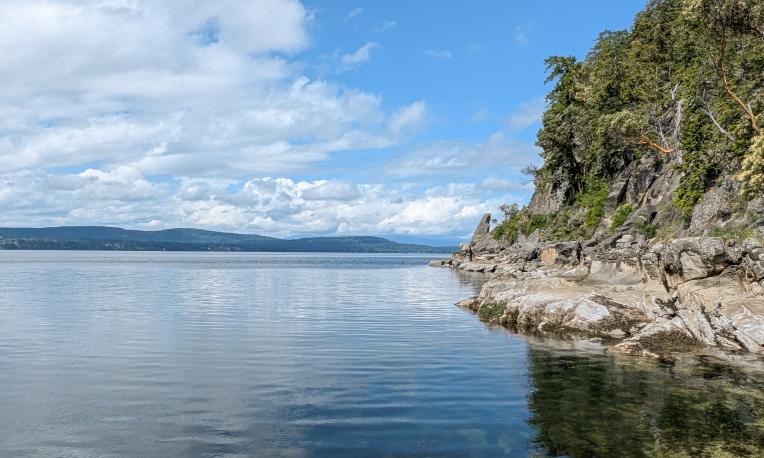
About TWU Travel Studies
Travel studies allow students to be immersed in a different culture. TWU professors lead the courses, joined by guest speakers who provide a local perspective. For many students, participating in a travel study is one of the most memorable adventures of their entire major, if not a life-changing one. Learn more about TWU travel studies.
About Trinity Western University
Founded in 1962, Trinity Western University is a global Christian liberal arts university dedicated to equipping students for life. Uniting faith and reason through Christian teaching and scholarship, TWU is a research institution offering undergraduate and graduate degrees in the humanities and sciences as well as in several professional schools. It has campuses in Canada in Langley, Richmond, and Ottawa. Learn more at www.twu.ca or follow us on Instagram @trinitywestern, Twitter @TrinityWestern, on Facebook and LinkedIn. For media inquiries, please contact: media@twu.ca.
Photos by David Clements and Anna Ogden.

